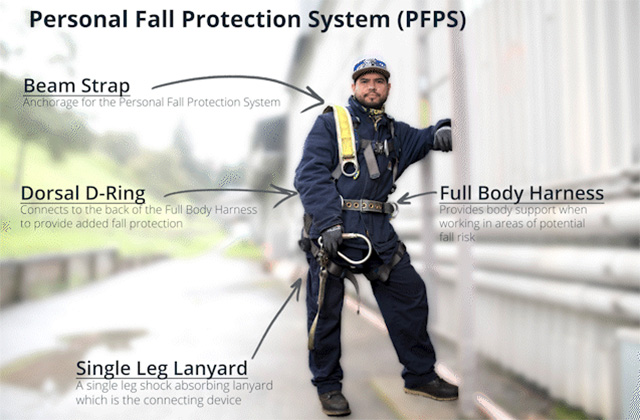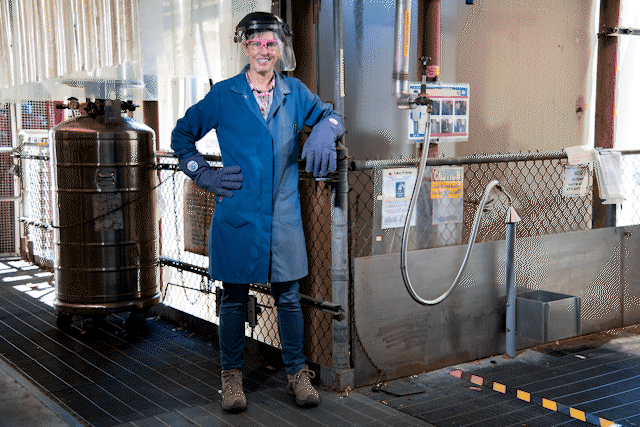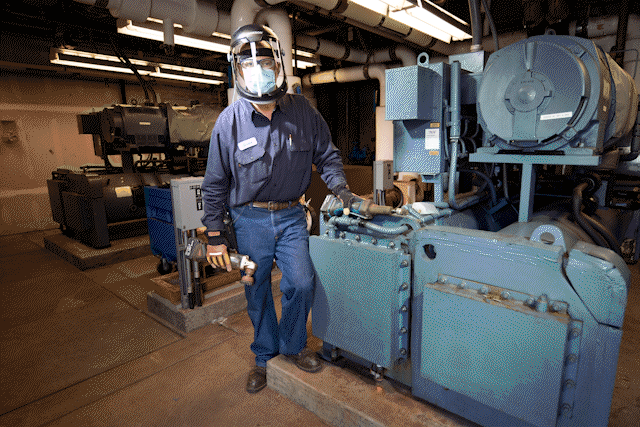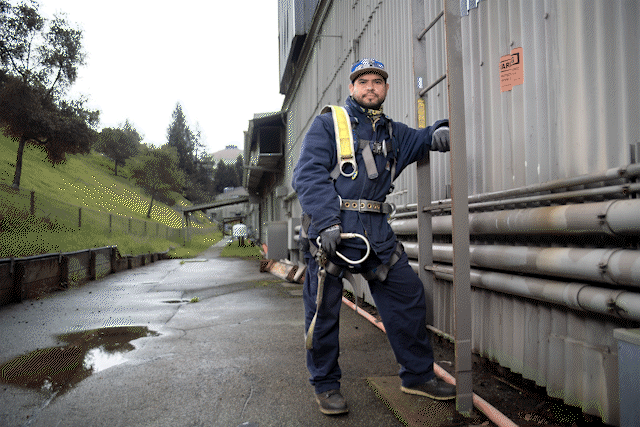
What equipment would you need if your job for the day included working on top of one of the Lab’s buildings? What would you need if you were working with hydrofluoric acid?
Berkeley Lab requires that appropriate equipment be used to protect employees from hazards in the workplace. Personal Protective Equipment (PPE) varies depending on the hazards you may encounter as you perform your work. PPE can range from the simple — protective eyewear, long pants and closed toe shoes in a laboratory — to the complex — fall protection equipment for that work on top of a building.
Determining PPE is part of the Lab’s Integrated Safety Management (ISM) process as a line management responsibility and is also addressed in Chapter 19 of Berkeley Lab’s ES&H Manual (PUB-3000).
Upon request, Environment, Health, and Safety Division (EHS) Subject Matter Experts (SMEs) provide assistance to Divisional personnel on the selection of the proper PPE for their specific work. Within EHS, individuals have been designated as program SMEs for everything from asbestos, to robotics, to welding. These individuals are the first point of contact when you need help in these topic areas; however, they work with other experts within EHS and across the Lab.
The first step in determining appropriate PPE is to identify all the activities required for specific work. Different activities are entered into the Lab’s Work Planning and Control (WPC) system. Once the hazards of the work are identified and selected in WPC, the Activity Lead reviews and may have the option to customize some of the controls presented by the WPC system. For high-risk hazards, specific SMEs are triggered for review and discussion of the work, but their assistance can be requested at any time.
The next step, surprisingly, is not to assign PPE right away. Activity Leads, in consultation with EHS program SMEs, will evaluate the activity to determine if it can be engineered in a way to increase safety. For example, if a researcher works with materials that catch fire when exposed to air, a glove box with a completely inert environment could be part of the engineered controls, helping to remove the risk of fire by removing the chance of oxygen exposure. If a glove box were not available, the work could be performed outside of a glove box using inert atmosphere handling techniques and specialized PPE.
Lab SMEs stress that PPE is a final line of defense, not the first. Effective safety management includes engineering controls, administrative controls, and appropriate training, followed by PPE if necessary. Above all, everyone at the Lab should make sure they fully understand the activities, training, and PPE requirements for any assigned work.
RESOURCES
EHS PPE Subject Matter Experts
Liquid Nitrogen GIF – click to download

Chiller Room Protection GIF – click to download

Fall Protection GIF – click to download


